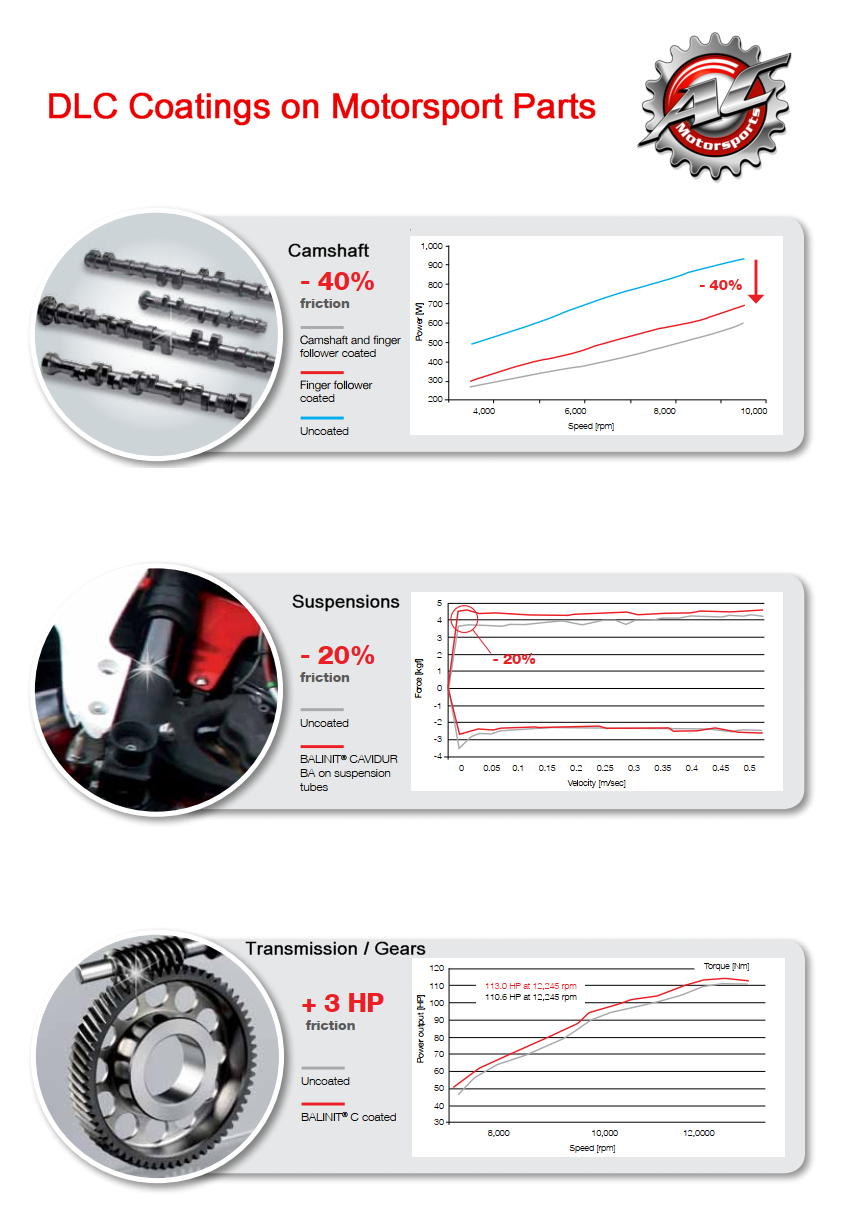Racing Fuels Properties Ceramic Bearings Plasma Ceramic Treatment SUPERFINISHING brisk racing sPARK pLUG ws2 TREATMENT DLC COATINGS 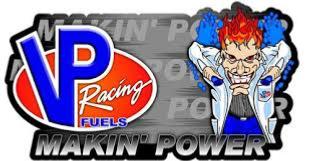
HOW LONG WILL VP FUELS LAST IN AN UNOPENED DRUM? The length of time the fuel will stay fresh in a sealed drum depends on the fuel itself. A non oxygenated fuel such as C12 can be used within a couple years. We have tested some of theses and it orked as well. This way you know the oxygen content is still within spec. Both oxygenated and non oxygenated fuels will most likely last longer than we have stated. So we recommend you to follow theses guidelines for your benefit and insure you the best performances.
HOW LONG WILL VP FUELS LAST IN ONE OF YOUR MOTORSPORT CONTAINERS?I would personally use it within 2 to 4 weeks. A plastic container is designed for fuel transfer, not storage. If you are going racing for a week or weekend, it’s OK to put your fuel in the plastic containers. I just recommend that when you get to your shop you put the fuel back in the drum and seal it. This will keep it fresh. Plastic is porous. Even though the liquid fuel doesn’t leak out, the light ends of the fuel can evaporate out of the plastic. Plus the sun’s UV rays can penetrate plastic and the lead may drop out. Again, plastic containers are designed for transfer, not storage.
WHAT DOES OCTANE REALLY MEASURE AND HOW IMPORTANT IS IT?One of the most frequently asked technical questions we get at VP involves the difference between Motor, Research and R+M/2 Octane Numbers. The next most frequently asked question is why some fuel companies represent their fuels with Motor Octane Numbers, while other companies use Research or R+M/2 Octane Numbers. Realize first that octane is a measurement of a fuel’s ability to resist detonation—nothing more. The two types of machines used for testing octane—a Motor Octane machine and a Research Octane machine—were designed in the 1930s. They were designed to test for octane numbers from the 0-100 range, therefore, any number above 100 is an extrapolation. Both of these machines are dinosaurs and are not adequate for today’s high tech fuels or engines, but they’re the only means available for testing fuels. These machines are one-cylinder engines with an adjustable head that can move up or down to increase or lower the compression ratio while the engine is running. The Motor and Research machines are the same in this respect, but they differ in several other characteristics.
The following is a comparison of the two machines used for testing octane numbers:
- Motor
- RPM
- INTAKE TEMP
- TIMING
- Octane Machine
- 900
- 300 DEGREES F
- VARIABLE BASIC
- Research Octane Machine
- 600
- 120 DEGREES F
- FIXED AT 13
DEGREES
(DOES NOT CHANGE)
SETTING 26 DEGREES
As you can see, the Motor Octane machine runs at a higher RPM, higher temperature and more timing. This machine puts more stress on the fuel than a Research machine and more accurately simulates a racing engine. VP Racing Fuels always includes Motor Octane Numbers when promoting its fuels because our fuels are used exclusively for racing applications. The Research Octane machine will always produce a higher number for the obvious reason that it does not put the same amount of stress on the fuel. This number is used by some fuel companies to trick the racer into thinking the fuel is rated higher, i.e., higher quality, than it really is. The “R+M/2” Octane Number is the average of the Research and Motor Octane numbers for a fuel and is the number displayed with yellow labels on retail level gas pumps. When comparing fuels for racing purposes make sure to compare Motor Octane Numbers because these are the ones that count in your racing application. Focusing on the MON of each fuel will help ensure you’re comparing apples to apples with regard to octane. But bear in mind, a fuel’s ability to prevent detonation is a function of more than just octane. For example, VP’s fuels—oxygenated or nonoxygenated—vaporize much better than competitive fuels with comparable octane ratings. This means VP fuels cool the intake charge, burn faster and yield more efficient combustion. As a result, the “effective” octane rating of VP’s fuels is even higher than the rating generated by the octane test. As a result, VP fuels will prevent detonation more effectively than competitive fuels with comparable MONs.
Too often, racers focus only on octane when evaluating the quality of a fuel. Octane is certainly important, but it’s just one of several key fuel properties that should be considered when evaluating and selecting a fuel. It’s entirely possible to generate more horsepower with a lower octane fuel if it’s designed properly with respect to its other key properties. It’s also possible for two fuels to have the same octane rating, but perform very differently due to their other key properties. 1. OCTANE: Octane is simply a rating of a fuel’s ability to resist detonation and/or preignition. It is not so much an indication of a fuel’s ability to make power, but rather a fuel’s ability to make power safely, i.e., without blowing your engine. Octane is rated in Research Octane Numbers (RON), Motor Octane Numbers (MON) and Pump Octane Numbers (R+M/2). A Pump Octane Number is the number you see on the yellow decal at gas stations, representing the average of the fuel’s RON and MON. (See below for a more detailed explanation of how octane numbers are derived and what they represent.) VP relies on MON numbers because the MON test more accurately simulates racing conditions. Don’t be fooled by high RON or R+M/2 numbers. Many companies use these simply because they look higher and are easier to come by because of the test methods. Also bear in mind that the ability of fuel to resist detonation is more than just a function of octane. 2. BURNING SPEED: This is the speed at which fuel releases its energy and is partially a function of a fuel’s vaporization qualities. At high RPMs, there is very little time (real time – not crank rotation) for the fuel to release its energy. Peak cylinder pressure should occur around 20˚ ATDC. If the fuel is still burning after this, it’s not contributing to peak cylinder pressure, which is what the rear wheels see. Because VP’s fuels are designed with a particular focus on vaporization characteristics, most of VP’s fuels—oxygenated or nonoxygenated—vaporize much better than comparable competitive fuels. This means it cools the intake charge, burns faster and yields more efficient combustion. As a result, the “effective” octane rating of VP’s fuels is even higher than the octane test indicates, and they will prevent detonation better than competitive fuels with similar MONs. 3. ENERGY VALUE: Energy value is an expression of the potential energy in fuel. The energy value is measured in BTUs per pound, not per gallon. The difference is important as the air/fuel ratio is in weight, not volume. Generally speaking, VP’s fuels measure high in BTUs per pound and thus, have a higher energy value. This higher energy value will have a positive impact on horsepower at any compression ratio or engine speed. 4. COOLING EFFECT: The cooling effect of fuel is related to the heat of vaporization. The higher a fuel’s heat of vaporization, the better its ability to cool the intake mixture. The superior vaporization characteristics of VP’s fuels make cooling effect one of their key advantages. A better cooling effect can generate some horsepower gains in 4-stroke engines and even bigger gains in 2-stroke engines. VP’s superior cooling effect can also ensure circle track racers maintain power in the longest races and harshest conditions. In virtually any application, the cooling effect of VP’s fuels will help extend engine life. Understanding these key properties of fuel will better equip you to evaluate fuels for your application. By clicking on your application to the right,
you’ll find a list of VP fuels designed with you in mind, along with the fuels’ relevant characteristics. Before making a final fuel selection, we encourage you to consult with your VP regional distribution center or VP’s Technical Support Staff.
Be prepared to answer the following questions: • Is your engine naturally aspirated, turbocharged, blown or using nitrous oxide?
• What is the compression ratio (CR) of your engine?
• Does your engine have O2 sensors or CATS?
• In what series or sanctioning body will you be racing?
• What are their fuel rules, e.g,. are any fuels illegal or do they allow oxygenated fuels?
• In which class will you be racing? You can be confident that once we understand your application, we’ll find the fuel that will make the most power for your engine!
CAN YOU OVER OCTANE AN ENGINE? IF SO, WHAT HAPPENS?Yes you can over octane an engine. Generally you will get sluggish throttle response. Also you may get fouled plugs and deposits in the exhaust ports and headers. When an engine is trying to burn a fuel that has too much octane, the burn rate is incorrect and all of the fuel won’t be used up. This excess usually gets left as a deposit or gets pushed out the exhaust. It is important to match your engine’s needs with the correct fuel.
IS IT OK TO USE NITROUS OXIDE WITH Q16?It’s OK to spray nitrous to Q16. I wouldn’t recommend multiple kits but single stages up to 500hp or so. When you spray multiple kits, you are introducing all the oxygen, i.e., nitrous, the engine can handle. This is where you want a fuel that will help reduce detonation, and where VP’s C23 is perfect. An oxygenated fuel hasn’t proved to be a benefit in these applications yet.
WHAT JETTING CHANGES ARE REQUIRED FOR Q16?Generally on a single 4-barrel application, 2 to 3 Holley jet numbers richer is sufficient. I have experienced many instances of over jetting with this fuel, where it works great on the dyno, but on the track the car is a pig. What I’m finding is most people are already rich, so when you go up another 2 or 3 jets you are way out of the ballpark. Most applications run best about 2 jet sizes richer from their previous fuel on the track. This is approximately 8% more fuel. If this still seems to be rich, you may need to increase the high speed air bleed .003 or so. This will get you to approximately 6% more fuel volume. This is where I have seen Q16 perform the best. Regarding air fuel ratio, I have seen the best power on a naturally aspirated engine around 12.8 to 1 to 13.3 to 1. This seems a bit on the rich side to me, but the engines like the extra fuel volume. Remember – every engine combination is different. It will take experimentation to get the desired result. All I can guarantee is the horsepower will increase and your ET’s will decrease.
WHAT TIMING CHANGES DOES Q16 REQUIRE?Generally on a single 4-barrel application, 2 to 3 Holley jet numbers richer is sufficient. I have experienced many instances of over jetting with this fuel, where it works great on the dyno, but on the track the car is a pig. What I’m finding is most people are already rich, so when you go up another 2 or 3 jets you are way out of the ballpark. Most applications run best about 2 jet sizes richer from their previous fuel on the track. This is approximately 8% more fuel. If this still seems to be rich, you may need to increase the high speed air bleed .003 or so. This will get you to approximately 6% more fuel volume. This is where I have seen Q16 perform the best. Regarding air fuel ratio, I have seen the best power on a naturally aspirated engine around 12.8 to 1 to 13.3 to 1. This seems a bit on the rich side to me, but the engines like the extra fuel volume. Remember – every engine combination is different. It will take experimentation to get the desired result. All I can guarantee is the horsepower will increase and your ET’s will decrease.
This fuel is the nuts for intercooled applications. We’re seeing huge increases in these applications. I haven’t seen any issues with detonation when they follow the 6% rule. This is richen your fuel system 6% over C16 (which is the fuel 90% of these applications are using now) and you should be close to the air fuel ratio you were at before the Q16. This is where Steve Petty (Dyno master) picked up 107Hp to the tire on a twin turbo 588 ci application. The Q16 isn’t responding as well in non-intercooled applications. I recommend that in these few instances, you should stay on C16. Heck, most of these applications have enough HP as it is.
HOW LONG CAN I LEAVE Q16 IN MY FUEL CELL BETWEEN USES?I recommend that you drain the fuel out of the car if it is going to sit more than a week. Not because of gumming or corrosion of the fuel system, but because of the oxygen and the fuel evaporating. This fuel is made up of many light materials, and it will evaporate quickly. You spent good money for this performance part. Keeping it fresh will ensure a more consistent result. In a perfect world, you should drain it every night. This won’t happen if you’re like me, because we racers are lazy (haha). If you have an aluminum cell, you can cap the vent and it should be fine for week to week storage. I do not recommend storing this fuel or any fuel in a plastic jug or container. Keep it in a sealed VP drum and it will stay good indefinitely.
I’d use regular methanol like VP’s M1 for the injection. This is what I personally use. All you are using the injection for is to cool the air charge. This is how you get more power, because you can add more timing or boost with a cooler charge. M3 has a hydrocarbon in it and won’t pull the heat like M1. M5 has a hydrocarbon and a combustion additive. I would definitely not use this. It could have bad results by combusting in the air inlet tube between the turbo and the throttle body. M1 is your best choice.
M5 contains nitroparaffins, which are relatives of nitromethane in the same chemical family.
So far M5 has worked in every application I have tried it in. From a single cylinder Briggs JR dragster to a Brad Anderson blown hemi. If you’re adamant about running methanol, there is no reason you shouldn’t run M5. It’s more consistent, you’ll use less, and it makes gobs of Hp.
WHAT JETTING CHANGES DOES M5 REQUIRE?This fuel seems to be very friendly in jetting. Steve Petty dynoed a 1000 rear wheel Hp vehicle and increased the jetting 15% and the car made 1080 to the tire. He reduced the jetting to 7% and the car went 1079 to the tire. This is an 8% tuning window. I recommend you jet up 10 to 12% to start and then you can back down from there. Al Brown (Antron’s father) did a back to back test with M5 vs. M1. His combination is a 540 ci injected big block Chevy running Top Dragster. With no difference in jetting, the car picked up .11 seconds and 6 mph. Again, every combination is different and you’ll need to run the tests to determine what your combination likes.
WHAT TIMING CHANGES DOES M5 REQUIRE?As with Q16, so far I have left the timing alone. Run what timing you had with regular methanol. Here’s my thought. The hydrocarbons in the fuel help vaporization, so you SHOULD be able to retard the timing a bit. But the fuel also contains nitroparrifins, which generally need the timing advanced to start the burn earlier. Since they are both in the fuel, they almost seem to cancel each other out, hence the timing will stay the same. Weird huh?
DO YOU NEED TO USE AN UPPER LUBE WITH M5?No, M5 already has enough upper lube in it. While VP’s M2 is excellent for use for straight methanol, I don’t recommend adding it to M5. I have seen injection nozzles clog up because of the extra lube.
HOW LONG CAN I LEAVE M5 IN MY FUEL CELL BETWEEN USES?I recommend the same as Q16. If the car is going to sit for a week or so, drain it out and put it back in the drum. Also, the fuel will not separate.
IF I'M USING REGULAR METHANOL NOW, SHOULD I TRY M3 OR M5?Unless you’ve already tried M3 with success (and M3 works great in many applications), I’d go right from regular methanol to M5. The range of applications that can benefit from M3 is slightly more limited than M5, while M5 will pick up virtually any application you put it in.
WHY DOES M5 WORK SO MUCH BETTER THAN STRAIGHT METHANOL?In two words, BETTER VAPORIZATION. Regular methanol doesn’t like to vaporize in the combustion chamber. It likes to stay in liquid form. In the combustion chamber on the combustion stroke, the engine needs to burn 2 things, fuel vapor and oxygen. If the fuel doesn’t vaporize well, then you will have wasted fuel going out the exhaust. The hydrocarbons and nitroparrifins in M5 help to vaporize the fuel more efficiently. This way there’s more fuel vapor in the combustion chamber and in turn the engine will make more power. |
 A lot of nonsense and false truths have been written about ceramic bearings compared to steel bearings. Let's set the record straight: First of all, the concept of a ball bearing is very simple: Mechanical parts roll better than they slide. Bearings reduce friction by using smooth metal balls or rollers and a smooth inner and outer metal surface on which the balls can roll. These balls or rollers "support" the load, allowing our mechanical parts to rotate smoothly. Compared to steel, Silicon Nitride (Si3N4) offers superior corrosion and heat resistance, greater dimensional stability and lower density, which facilitates high speeds. Ceramic Evolution's silicon nitride bearings are successfully used in GP motorcycle engines, F1 engines, motocross and dragster top fuel engines. Silicon nitride balls are lighter than steel. This means that less centrifugal force is developed on the bearings, which has the effect of suppressing heat generation between the balls and the outer ring. The result is superior high-speed performance and operation at much higher speeds.
1. Construction and advantages of hybrid ceramic ball bearings. This type of ball bearing is constructed with inner and outer rings made of chromium steel or stainless steel. The balls usually made of steel are replaced by ceramic rolling elements. This type of mounting allows the hybrid bearing to rotate at a much higher speed than the conventional steel bearing. Modern competition engines, gearboxes and transmissions, which run faster and faster, require reliable and high efficiency components. As a result, loads and operating environments become more demanding. In the hybrid ceramic bearing, the balls are made of silicon nitride (Si3N4). This meets many requirements and offers a long list of features far superior to those of conventional steel bearings. 2 - Speed and acceleration. The rotational speed of hybrid bearings is 30 to 50% higher, with less lubrication than with a conventional all-steel bearing. This is due to a reduction in centrifugal force due to the difference in weight (minus 40%) of the ceramic. Acceleration is also higher. 3 - Increased rigidity. Silicon nitride balls have a 50% higher resistance to deformation than steel balls, which gives 15 to 20% more rigidity, while improving precision. Contrary to commonly held but poorly documented beliefs, ceramic balls (Si3N4 Cerbec) on very high quality raceways are not more fragile than stainless steel or steel, but stronger and much more durable.
4 - Higher precision. Ceramic balls (Si3N4 Cerbec) have a better finish than steel balls, the vibration of the internal clearance of the bearing is reduced, the rotation speed is higher. The quality of rotation is exceptional compared to an all-steel bearing.
5 - Less friction, less heat emission. Ceramic hybrid ball bearings are truly anti-friction. The dissociation of material of the balls in contact with the raceways of the rings cancels the micro-welds at the contact points of the rolling elements, reducing the stress of the material at high speed and high temperature. With reduced internal friction, the bearing will consume less lubricant and therefore less energy consumption. There is less vibration, so the noise level is reduced, thus prolonging the life of the bearing.
6 - Reduced lubrication. Hybrid ceramic bearings have improved kinematic behavior, produce less friction, therefore require less lubricant.
7 - Thermal expansion. The low coefficient of thermal expansion allows hybrid bearings with ceramic balls to undergo smaller contact angle changes, thus reducing initial load variations, improving bearing life by maintaining its pre-load capabilities.
8 - Conductivity. Electrical corrosion pitting in the ball race is caused when current flows through the balls and the dielectric effect created by the oil film. As ceramic balls are insulating, this wear effect is cancelled out. 9 - Conclusion. Less friction, less heating, less vibration, less inertia, less weight, less thermal expansion, higher rotation speed, more precision, the list is long. Less power loss in the transmission. The conclusion seems obvious: More power to the drive wheels and less loss to the other rolling elements. A winning investment!
| Property | Acier | Céramique | Différence | | Density | 7,6 | 3,2 | - 58% plus léger | | Hardness | 700 | 1550 | + 121% plus dur | | Elasticity | 190 | 320 | + 68% plus rigide | | Coefficient of thermal expansion | 12,3 | 2,9 | - 76% | | Max temp °C | 320 | 1000 | + 680°C | | Surface roughness | 0,02 | 0,005 | + 75% plus lisse | | Lifetime | - | 10x | 10x |
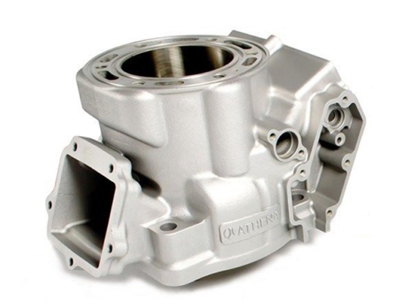 Ceramic plasma is a surface treatment based on nickel-ceramic, chemically applied under vacuum at 300°C on aluminium and cast iron cylinders, 2 and 4 strokes. This coating allows a gain in power while reducing friction by 20%. This technique favours the sliding of the piston. In addition to this thermal gain (Thermal conductivity 0.22 calorie/Cm2°C), the ceramic plasma brings hardness (Particle hardness HT 3000, Coating hardness 550 - 600 minimum of HT) and micro porosity. (Average ceramic particle size 0.8um (microns) allowing grease storage during lubrication. This material is very resistant to rapid temperature rises and offers excellent thermal conduction, facilitating cooling.
Thus treated, the cylinder benefits from the following characteristics : - Hardness much higher than Niquasil. - Coefficient of roughness Ra reduced to 0.6 - Resistance to wear. - Better piston "glide". - Thermal gain. - Increased piston and cylinder life. Applied as it is, treatment alone is not enough, which is why our offer of ceramic plasma treatment includes all the following actions: - The removal of the previous treatment. - The dimensioning of this treatment according to the piston supplied. (generally between 5/100th and 7/100th) - Chamfering and deburring of transfers if 2 stroke - Surfacing of the upper parting line if necessary. - The complete bead blasting of the cylinder (including transfers). - And finally the degreasing and cleaning of the cylinder. 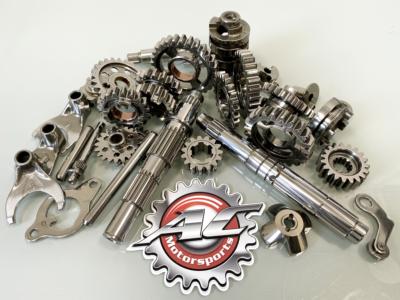 Now it is possible to enjoy the most prestigious automotive techniques used in Formula 1 or Moto GP. An aeronautical process applied appropriately to the mechanical performance of racing engines and mechanical transmission. Performance - More power Endurance - Reduced friction and operating temperature Reliability - Vibration and noise reduction Anti Friction - Reduces or eliminates the effects of micro impact on the sprockets. Less energy loss - Increased mechanical performance Reduced risk of breakage - Longer component life Tribofinishing is based on a non-abrasive mechanical/chemical process that provides beneficial properties in their exceptional ability to reduce friction, wear, noise and dynamic fatigue. This method is achieved by grinding and weaving non-oriented (isotropic) surface. This isotropic surface has no preferential direction or geometric shape and allows the components to be much stronger. Superfinishing does not remove the metal, but it completely removes the conversion coating from the surface of the parts, producing a smooth appearance and at the same time applying a protective coating that does not adhere to the surface. Conversely, traditional grinding, smoothing and lapping techniques do not eliminate roughness, they transform it into roughness wrinkles; the components remain in their mode of deformation, wear and contact fatigue. The process is controlled and can be repeated countless times. This makes it possible to replace some treated parts with others that have been further treated. The most important improvement on the components is the reduction of friction caused by the ultra-smooth surface, but not only: this reduction also leads to remarkable reductions in noise, operating temperature and eliminates "pitting" on the parts. The tribofinishing process undoubtedly improves performance as it eliminates spikes on the contact surface and creates a micro texture that helps to retain the lubricant. Tribofinishing also eliminates any damage caused by the metal surface when grinding, smoothing or carburizing. The improvement in performance is quantifiable between +2.5% and +7%. It depends on the type of engine and torque transmission. The more complex the engine and/or the drive train, the greater the benefit obtained. It is possible to apply tribofinishing on all types of engines and in all disciplines: cars, motorcycles, karts cross, kartings, dragsters... 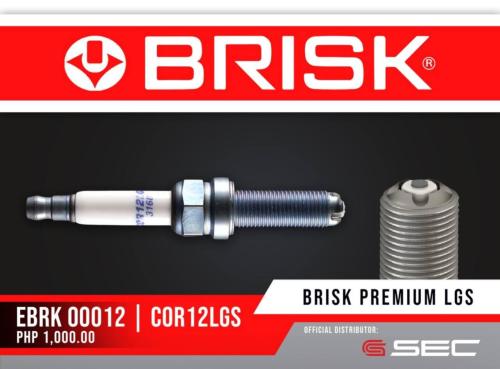 Brisk Racing LR, ZS/ZC and LGS Premium series spark plugs are designed to make the most of the high-powered ignition systems used in high-performance 2-stroke and 4-stroke engines. The exclusive design of Brisk spark plugs provides maximum spark exposure and unlimited access to the air/fuel mixture. This is a plus for racing engine applications where it is necessary to maximize combustion for optimum power and torque. KEY ADVANTAGES OF BRISK LR, ZS/ZC AND LGS PREMIUM SPARK PLUGS - Semi-surface discharge with high potential = MORE POWER - Discharge at the richest point within a 360 degree perimeter (ZS/ZC) - Extremely long spark of almost 3 mm (LGS Premium) - Patented spark plug design - no indexing - Integrated and retracted electrode - Silver center electrode (LR/SL) - Better thermal and electrical conductivity Brisk Premium Multi-Spark plugs are an entirely new type of spark plug. Owning to their unique design, they produce more than one spark per impulse of the ignition system. More than one simultaneous point of ignition results in better and more spontaneous ignition of the air-fuel mixture. Spark Plug sparks are not shielded by the ground electrode; therefore it provides faster, unrestricted expansion of the flame front. The mixture burns more uniformly and more quickly. The result of better utilization of available combustion energy is more power, better acceleration, lower harmful exhaust emission and reduction in fuel consumption. Brisk Premium spark plugs are available in three design variations, each suitable for specific application LGS, GS, ZC. Brisk Premium LGS spark plug has been developed after two-year cooperation with Lamborghini Morori Marini. Brisk Premium LGS spark plug utilizes extremely long glide-spark and massive integrated side electrode. Massive integrated side electrode ensures superior heat removal from active part of the spark plug even in the most extreme conditions, therefore eliminating electrode burn off seen on conventional spark plugs in race applications. Extremely long glide spark (almost 3mm) protrudes deep into combustion chamber, carries more potential charge and is unshielded by the conventional side ground electrode. The air and fuel mixture is ignited by the Brisk Premium LGS spark plug more spontaneously and flame front spread is unrestricted and more uniform. SPARK PLUG TEMPERATURE CONVERSION TABLE TEMPERATURE | COLD
|
|
|
|
| HOT | BRISK | 8 | 10 | 12 | 14 | 15 | 17 | NGK | 10 | 9 | 8 | 7 | 6 | 5 | DENSO | 31 | 27 | 24 | 22 | 20
|
WARNING: A BRISK Racing spark plug is slightly longer than a "classic" spark plug, so make sure that it does not touch your piston during assembly. If this should be the case, add a second washer under the spark plug. |
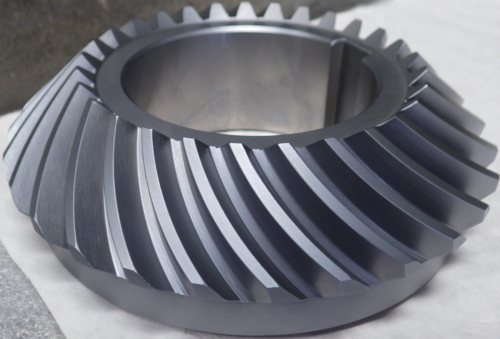 In addition to tribofinishing, AC Motorsports offers you the ultimate solution to further reduce friction. A secret formula or device that will give you a definite advantage over your competitors. Tungsten Disulfide (WS2) was developed by NASA as a lubricant for deep space probes where vacuum and very low temperatures make conventional lubricants unsuitable for space missions. For 2020, we have decided to bring this new surface treatment in addition to tribofinishing. WS2 is applied by very high-speed spraying after tribofinishing to further reduce friction and extend the life of gearboxes and other engine parts. Gearboxes and other parts coated with tungsten disulphide work with much lower friction, higher efficiency (7-9%) and can operate at higher speeds with considerably longer life. Many racing teams in competition equip their engines with WS2 treatment. The coating is 0.5 microns thick, so no technical modifications are required and the surface treatment does not come off. No heat is used in its application. The WS2 treatment is compatible with all gearboxes in any engine. The WS2 coating is porous and offers excellent oil retention to ensure that you always have a lubricating film (oil and WS2) between the metal surfaces in contact. WS2 has a very low coefficient of friction and therefore generates less heat inside the gearbox. Gear shifting will require less force and will be smoother and faster in operation. WS2 greatly delays the appearance of the micro pitting characteristic of racing gearboxes. |






